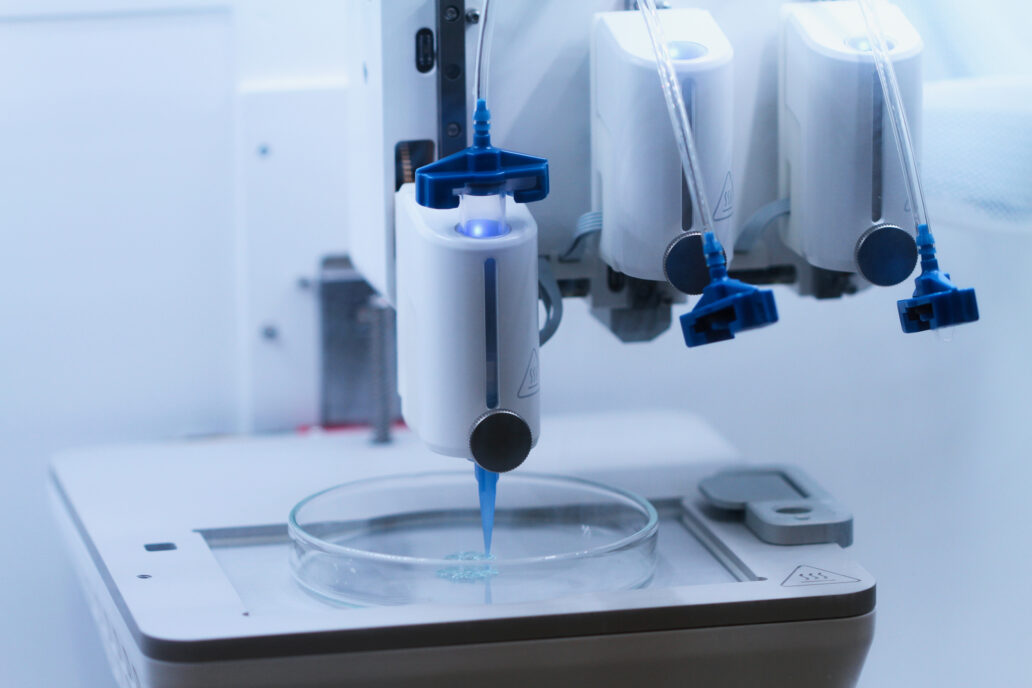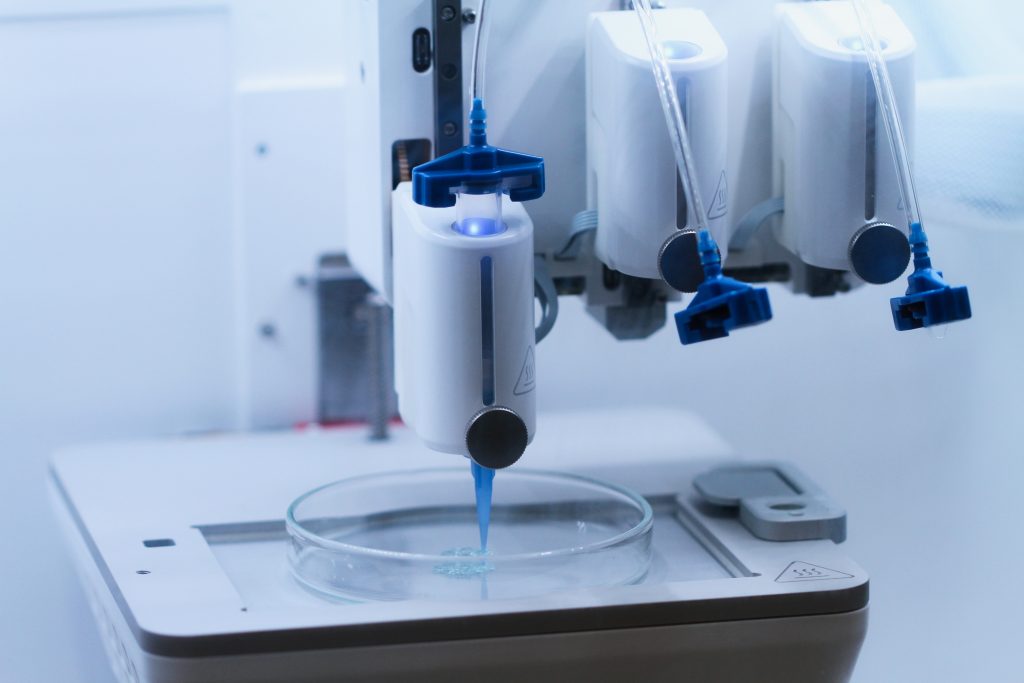
Developing Regenerative Medicine, Microfluidic-Based assays, and Cell Therapy Applications
Personalized medicine approaches can transform the field of biomanufacturing through the use of additive manufacturing technologies. Successful implementation of such processes requires an interdisciplinary effort with engineers, biologists, and clinicians working together to achieve success developing regenerative medicine, microfluidic-based assays, or cell therapy applications.
As an American working in Canada, I am continually impressed by their biotechnology and life sciences resources and achievements. I want to share three reasons why biotechnology companies should think Canada when developing Regenerative Medicine, Microfluidic-Based assays, and Cell Therapy applications.
My research laboratory at the University of Victoria focuses on using 3D bioprinting to generate personalized tissue models by harnessing the power of stem cells. We use Biomedical Engineering to produce these personalized, humanized bioprinted tissue models on demand.
As we head into our third year of the global COVID-19 pandemic, one bright spot has been the increased focus on biomanufacturing and its role in supporting the global economy. The pandemic has illustrated the need for such biomanufacturing approaches due to the increased demand for biologics, including vaccines and antibodies. Canada has been developing and translating a variety of promising biomedical technologies into clinical practice.
While the impressive development of multiple vaccines against COVID-19 often comes to the forefront when thinking about biomanufacturing, Canada has also made impressive strides in the development of stem cell therapies for treating a variety of diseases as well as other biologic therapeutics with diverse healthcare applications.
Here are three reasons to think Canada for biotechnology development:
1- Biotechnology Industry Built Upon Existing Regenerative Medicine Strength
Dr. James Till and Dr. Ernest McCulloch discovered stem cells in 1961 in Ontario. Their legacy is carried on through companies like STEMCELL Technologies and the Canada-wide Stem Cell Network that recently celebrated its 20-year anniversary. For example, Viacyte – a San Diego based biotechnology company – partnered with Dr. Kieffer’s group at the University of British Columbia to conduct a clinical trial to demonstrate stem cells can be used to treat Type I Diabetes.
This work highlights the benefits of participating in an academic-industrial collaboration, which are often necessary for conducting clinical trials as well as the benefits of choosing Canada as the site for hosting these types of clinical trials. The B.C. Cancer Agency here in Victoria has successfully produced clinical grade CAR-T therapies for treating cancer patients. These therapies use a patient’s own stem cells to attack the cancer cells. Both of these clinical trials represent the first of their kind in evaluating the efficacy of these novel therapies.

Our group collaborates with Starfish Medical as a way to translate these cutting-edge regenerative medicine technologies for broad applications including projects in the personalized medicine space and translating technologies developed in my research lab for commercial applications.
StarFish Medical has extensive experience in developing the tools needed to monitor the production and quality management of such cell therapies. Their expertise in medical devices can address challenges in cell therapies, including monitoring the quality of the cells produced, expanding the number of cells needed, and purifying appropriate populations of cells for therapeutic applications.
One recent area of interest in the cell therapy field is the use of 3D bioprinted therapeutic tissues that harness the power of stem cells. Our lab recently published a study in the journal Advanced NanoBiomed Research showing how we can bioprint functional neural tissues from human induced pluripotent stem cells.
Life Sciences B.C., the B.C. Regenerative Medicine Initiative and the Vancouver Island Life Sciences group can provide additional information on work being done in British Columbia.
Taking cellular therapies requires overcoming a variety of biomanufacturing challenges due to their complex nature. The California Institute for Regenerative Medicine and the New York Stem Cell Foundation play similar roles in the United States. Working with such organizations can help ease the transition of experimental cell therapies as these regenerative medicine treatments are translated to the clinic.
2- Canada has a strong and collaborative biomanufacturing ecosystem
One of the secrets that allows Canada to punch above its weight in the biomanufacturing economy is the tradition of collaboration between academia, industry, non-profits, and government support. Here in British Columbia, both the University of Victoria and the University of British Columbia have strong undergraduate programs in Biomedical Engineering that provide an important supply of talent to feed the growing biomanufacturing ecosystems and address challenges in regenerative medicine.
Additionally, the University of Victoria will be offering a professional Masters of Engineering in Biomedical Systems starting in Fall 2022 – further providing engineers with the ability to upskill. These students are supported by organizations like Biotalent Canada who provide wage subsidies allowing students and recent graduates the opportunities to work at companies that support our biomanufacturing economy.
Creative Destruction Labs also provides a unique opportunity for seed stage start-ups to grow and scale – this program is open to companies from all over the globe. The Health stream is run out of the University of British Columbia.
3- The Canadian government funds a comprehensive biomanufacturing strategy
The Canadian government has already invested $1.2 billion dollars into a national biomanufacturing strategy that they are continuing to support. Canadian government also supports research and development through its national funding agency – the Natural Sciences and Engineering Research Council.
Countries around the global are dealing with supply chain issues and uncertainty due to the pandemic disrupting normal operations and methods of transporting supplies between countries. Thus, having a strong connection to local suppliers has become increasingly important in these difficult times.
For example, StarFish Medical was able to design and deliver a unique ventilator design during the COVID-19 pandemic due in large part to having a large network of Canadian partners to leverage during this important project.
They also received support from the NGen Manufacturing Supercluster organization as the government of Canada along with other governments around the world recognized the importance of home grown manufacturing efforts for essential items including medical devices like personal protective equipment and biologics, including vaccines.
There are many more examples and initiatives that make Canada worth considering when developing personalized medicine approaches, and interdisciplinary efforts with engineers, biologists, and clinicians. I’d enjoy hearing from others about their experiences working with Canadian biotechnology and life sciences partners on developing regenerative medicine, microfluidic-based assays, or cell therapy applications.
Images: Axolotl Biosciences
Stephanie Willerth, Ph.D., P.Eng., is a Full Professor in the Department of Mechanical Engineering, Division of Medical Sciences at University of Victoria, Canada Research Chair in Biomedical Engineering, Member of the International Collaboration on Repair Discoveries (ICORD), and Scientific Advisor to StarFish Medical Bio Services.
